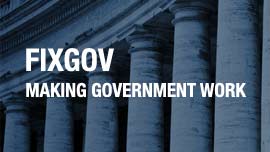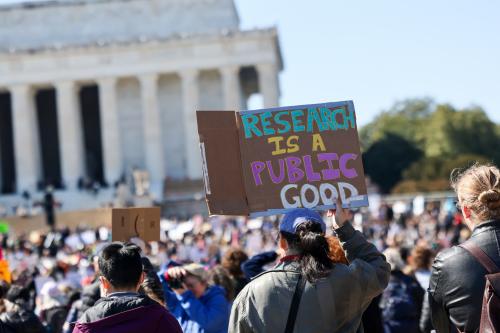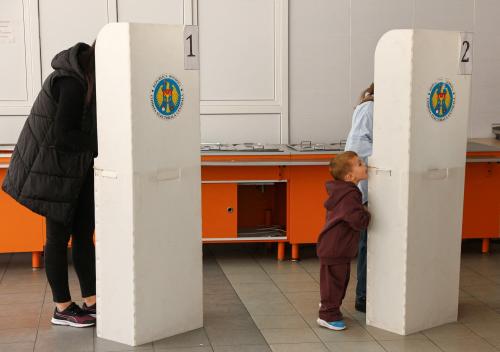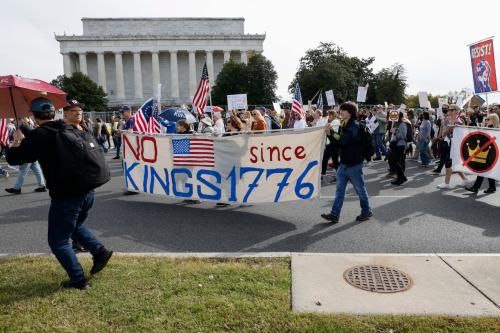In the weeks since the Oval Office confrontation between Ukraine’s president, Volodymyr Zelensky, and Donald Trump, Americans have become more supportive of Ukraine’s cause in its struggle against Russian invaders, and they are willing to consider measures to involve the United States in postwar peacekeeping that Trump has all but ruled out. These are two of the many conclusions drawn from public opinion surveys conducted in March. Here’s the full story.
Americans remain strongly on Ukraine’s side rather than Russia’s. In five surveys, support for Ukraine averaged 59%, compared to just 3% for Russia.1 Support for Ukraine crosses every line of race and ethnicity, party affiliation, ideology, age, income, and education. It represents a national consensus.
Similarly, they are far more favorable to Zelensky than to Putin. NBC found 46% of Americans had a positive view of Zelensky, with 32% negative. Putin’s positive ratings stand at 3%, his negatives at 84%. A survey conducted by the Chicago Council puts Zelensky’s favorability at 53%, Putin’s at 7%. When asked whether Zelensky was a “dictator,” as President Trump once charged, 22% agreed and 54% disagreed. By contrast, 81% think that Putin is a dictator, with only 5% disagreeing.
And they believe that Russia and Putin are principally responsible for the war. According to More in Common, 60% believe that Russia bears the main responsibility, with only 5% pointing to Ukraine, while 20% believe that the responsibility is shared. In the Chicago Council survey, 86% blamed Putin, compared to 33% for Zelensky. About three in 10 think that NATO and the U.S. played a role as well.
By contrast, they see Trump as more sympathetic to Russia. In four surveys, an average of 48% thought that Trump leaned toward Russia, compared to just 10% who found him more sympathetic to Ukraine and 37% who thought that he favored neither over the other.2
The American people are closely divided on Trump’s handling of the Russia-Ukraine conflict, but with significant partisan divides. In five surveys, approval for Trump’s performance on this issue averaged 45%, with 49% registering disapproval.3 Substantial majorities of Republicans and conservatives approved, equally large majorities of Democrats and liberals disapproved. Swing groups—moderates and independents—leaned against the president by margins of 13 and 20 points, respectively.
Compared to Zelensky, more disapproved of Trump and Vance’s conduct in the Oval Office meeting. When asked who was “most disrespectful” during this confrontation, 43% of respondents to the More in Common survey cited Trump, compared to just 22% for Zelensky. In a recent Brookings survey, only 36% said that Trump’s conduct was “appropriate,” while 46% thought that Zelensky had behaved appropriately.
On balance, the Oval Office meeting made Americans more sympathetic to Ukraine. According to the Brookings survey, 31% of Americans came away from the meeting more favorably inclined toward Ukraine, while 19% said they had become less sympathetic and 33% reported no impact. More in Common found much the same: 38% became more sympathetic, 18% less sympathetic, and 44% were unaffected.
Support for continued aid to Ukraine has strengthened, but with continuing partisan splits. The latest Gallup survey found that 46% of Americans now believe that the U.S. is not doing enough to help Ukraine, up from 30% three months ago—and the highest level recorded since the war began. Similarly, a CNN poll conducted in mid-March found 38% endorsing the view that we are doing too little for Ukraine, up from 30% at the end of January. According to the most recent Economist/YouGov poll, fielded between March 22 and March 25, 2025, 49% wanted aid to continue at current or increased levels while 29% wanted aid to decrease or stop altogether. More in Common reported that 48% believe that halting aid would weaken our standing in the world; only 16% believe that it would strengthen our global standing.
The partisan divide on Ukraine persists, however. The Economist/YouGov poll found that 78% of Democrats want to continue or increase military aid to Ukraine, compared to just 30% for Republicans. Conversely, 54% of Republicans want to decrease or stop military aid, a position shared by only 9% of Democrats. President Trump will not find it easy to satisfy both his base and the majority of the electorate.
Beyond stabilizing the front lines, Americans support Ukraine’s goal of regaining at least some of the territory it has lost. According to Gallup, 53% of Americans now support helping Ukraine regain lost territory, up from 48% in December. More in Common found 32% favoring aid for Ukraine until it regains the territory lost since the February 2022 Russian invasion, with an additional 24% supporting aid until Russia is pushed out of everything it has seized since the invasion of Crimea in 2014. According to the Chicago Council, only 19% would regard a peace agreement as acceptable if it allowed Russia to keep all the Ukrainian territory it now occupies.
While most Americans favor negotiations to end the conflict, worries are widespread about the outcome of agreements that might be reached. According to the March 2025 Harvard Harris survey, 70% of Americans favor negotiations. But the Chicago Council found just 3% support for negotiations including only Russia and the United States, compared to 69% favoring the inclusion of Ukraine and the European Union as well. Surprisingly, these broader negotiations are favored by 60% of Republicans as well as 77% of Democrats and 73% of Independents.
But skepticism of negotiations is widespread. By a two to one margin (56% to 28%), Americans fear that Russia is unlikely to honor a ceasefire. Even more (79%) are concerned that Russia would not honor the terms of a fair peace agreement. This sentiment matches the statements made by Zelensky about Russia not honoring agreements and breaking previous ceasefire deals. In this case, Americans’ skepticism of Russia mirrors Ukraine’s.
There is a surprising amount of support for sending U.S. troops as peacekeepers if an agreement is reached. The More in Common survey found 45% support for sending U.S. military personnel to act as peacekeepers, 35% opposed, and 20% undecided. According to the Chicago Council, 57% would support using U.S. and NATO forces to enforce a ceasefire if Russia breaks it, and 56% would support sending U.S. and NATO forces to help Ukraine defend itself if Russia restarts the war after a ceasefire.
Conclusion
These findings should be interpreted with caution, of course. The relative bargaining power of the parties to a potential agreement may preclude negotiating the terms many Americans favor. If the involvement of American troops moved beyond the hypothetical to a serious possibility, the public could draw back.
But one thing is clear. The sympathies of the American people are clearly engaged in the struggle between an invading power and a country seeking to preserve its sovereignty, independence, and territorial integrity. In the weeks following Trump’s contentious oval office meeting with Zelensky, the Trump administration has introduced a ceasefire proposal, which Ukraine has accepted. Russia on the other hand rejected the proposal in its current form, and Trump has since reportedly become increasingly “angry” with Putin’s counter demands.
Nevertheless, the impressions persist that the president continues to lean toward Russia. If the Trump administration treats this morally laden conflict simply as a matter of power and resources, it could pay a surprisingly high political price with the vast majority of Americans who have chosen Ukraine’s side.
-
Footnotes
- Brookings: 59-2; CBS/YouGov: 52-4; NBC News: 61-2; More in Common: 61-3; Econ/YouGov (3/22-25): 60-3.
- NBC News: Russia 49, Ukraine 8, neither 40; CBS News: Russia 46, Ukraine 11, neither 43; Chicago Council: Russia 53, Ukraine 6, neither 37; Econ/YouGov (3/16-18): Russia 43, Ukraine 14, neither 28.
- Econ/YouGov (3/16-18): 39-47; CBS News: 51-49; NBC News: 42-55; More in Common: 39-50; Harvard-Harris: 56-44.
The Brookings Institution is committed to quality, independence, and impact.
We are supported by a diverse array of funders. In line with our values and policies, each Brookings publication represents the sole views of its author(s).









Commentary
What Americans believe about ending the war in Ukraine
April 4, 2025